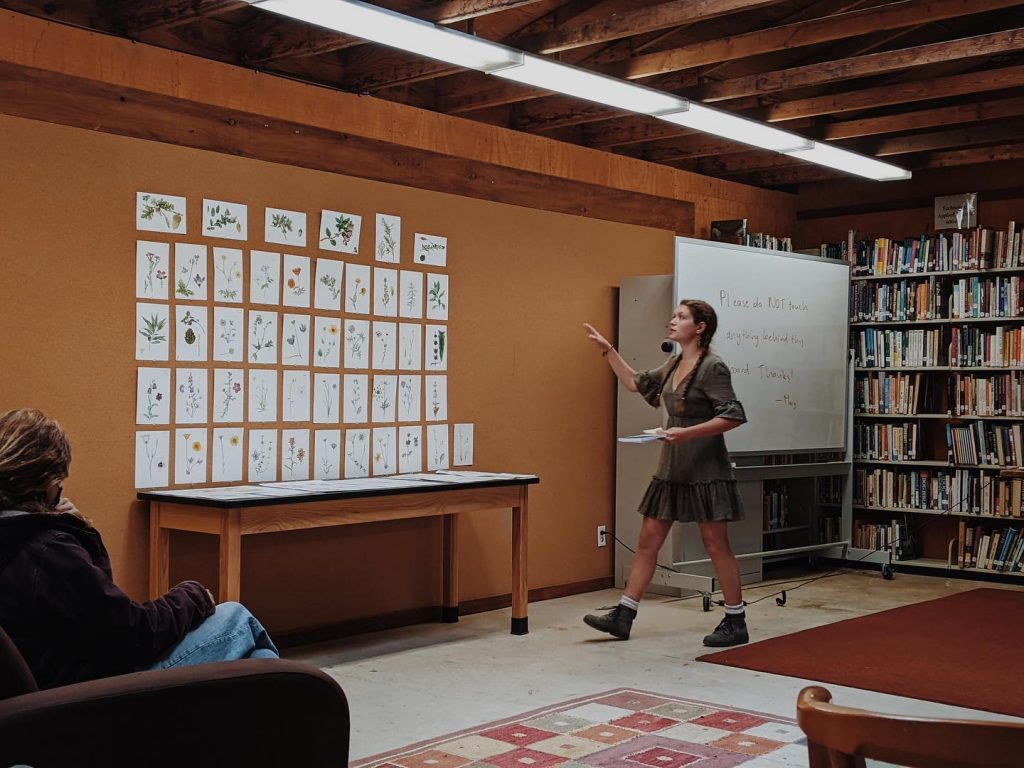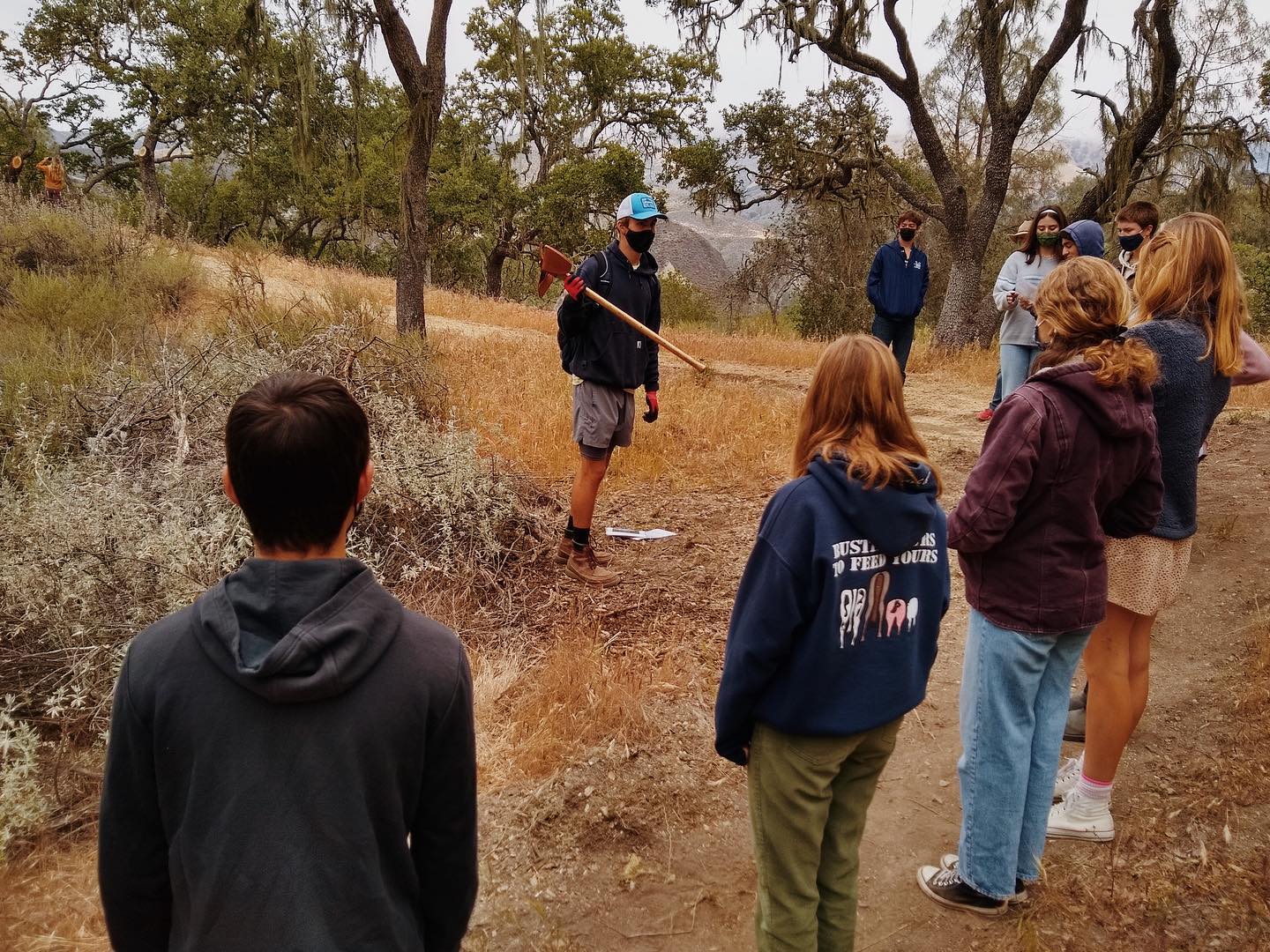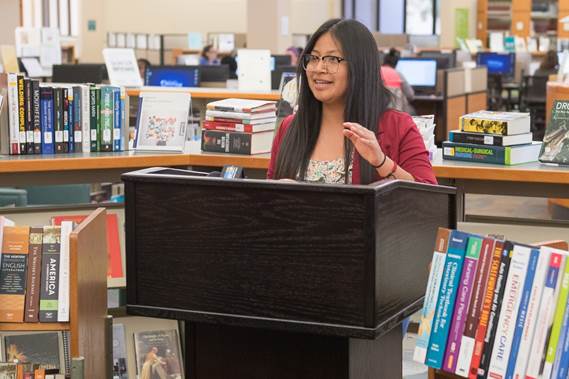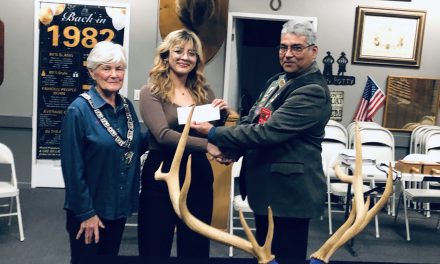Staff Report
The Midland School senior projects are an opportunity for seniors to design an independent project-based course addressing a line of inquiry in an area of their own interest.
Their projects last a semester long, which is a tough endeavor that requires planning, time management, craftsmanship, problem solving and student engagement.
Here are some of the projects completed by Midland seniors that will benefit future students as well as the Santa Ynez Valley communities:
Lights and traffic
As the Santa Ynez Valley grows in popularity both as a place to live and a tourist destination, an influx of traffic could threaten the “essential rural feel” of the area. Porter Barnes’ senior project seeks to understand a potentially simple solution to the overcrowding of the valley roadways: modifying light patterns to improve our local intersections.
Using an agent-based modeling system called NetLogo, Porter investigated one particular intersection between the Alamo Pintado Road and Highway 246 to discover what light patterns reduce the queue length (number of cars waiting) and sojourn time (time to get through the intersection).
Using five main components: environment, car-behavior, light patterns, view restrictions and data collection, Porter discovered three key recommendations through his model. Firstly, a directional light pattern is essential in the high-flow directions. Secondly, the difference between parallel and directional in the low-flow directions is nominal. Thirdly, the light lengths should be based on regularly updated traffic studies that match the correct flow ratios to the lights.
With understanding of the limitations of his model and areas for future improvement, especially adding left-hand turn lanes, driver-variance and adaptive light patterns, Porter wrapped up his project paper recommending further research prior to construction or policy change.
Blazing a trail
Senior Luke Brennan set his sights on building a new Midland trail as a way of creating something beautiful from hard work and also adding a treasure to the community that could last a lifetime.
Identifying Midland’s Rain Gauge trail, which he had worked on as a sophomore, as a tricky trail with a sudden end along Figueroa Mountain Road, he was inspired to create a practical trail connecting Res Road to Rain Gauge trail.
Creating a trail from start to finish was an entirely new process, and Luke completed significant research, including learning how to use CalTopo, mapping software which allowed Luke to navigate the Midland terrain digitally and find the most ideal descent from Rain Gauge’s elevated location. He flagged (and re-flagged) the trail multiple times before determining the best path.
From there, he gathered a team composed primarily of other Midland students, taught them how to properly use trail work tools, and headed off to build the trail.
Over the course of Midland’s MIDterm (a week mid-semester dedicated to hands-on, experiential projects), Luke led his crew through an intense and fun trail building agenda. With priorities such as causing minimal damage to tools, improving trail quality through thoughtful design, negating erosion and easing slope intensity, Luke leaned into trail-building techniques such as drainages, stabilizers, switchbacks and steps. Finally, after working long hours with his trail building team, Luke completed a beautiful new Midland trail: Bobcat Bend trail.
Creating a cup
Max Rasilla used porcelain clay, rather than the typical dover white stoneware, to create a unique cup for the Stillman dining hall to reuse, with it being durable enough to last through many dishwashings.
Edible insects?
How would you entertain a meal of insects? Midland senior Melia Collard explored the possibility of entomophagy (eating insects) and set out to build a successful mealworm farm and answer her questions if edible insects would be a realistic protein supplement for a household.
Over the course of Midland’s spring semester, Melia actively managed a farm of over 2,000 mealworms while completing her larger research on insect farming and recipes and restaurant menus. After a few bumps in the road (namely, navigating mold growth in her farm), she was able to host an Experiential Saturday for Midland students where she organized and presented her project to 10 other students through a combination of slideshows, taste tests, cooking competitions, and miniature bug farm building.
Her research led her to the conclusion that her small-scale farm couldn’t provide enough protein for a small household, but that a larger scale set up could feasibly provide a sustainable alternative to traditional meat.
Documenting campus flora

Inspired by Midland’s 2,860-acre campus and learning about native flora of the property during her freshman year, Macy D’Attile dedicated her senior project to researching and documenting (through illustration & writing) the flora of Midland’s campus. She quickly learned new photoshop skills to transfer her artwork into a digital format and began putting together a ready-to-print document that would eventually wind up (she hoped) as a bound book of 46 Midland plants. With some generous guidance from Jeff Goddard, Midland’s marine biology & field ecology teacher, and the support of local printer John Nygren of JanoPrint, she is currently in the process of final book review steps and looks forward to a first print-run of 150 copies, the majority of which she plans to gift to Midland students, faculty, and to leave as a resource for future Midland students and all future visitors to Midland’s campus and trails.






